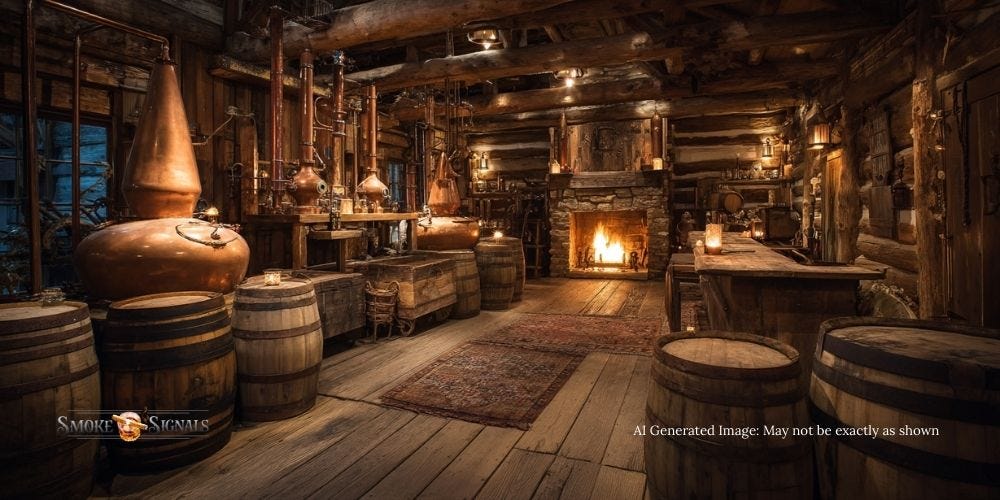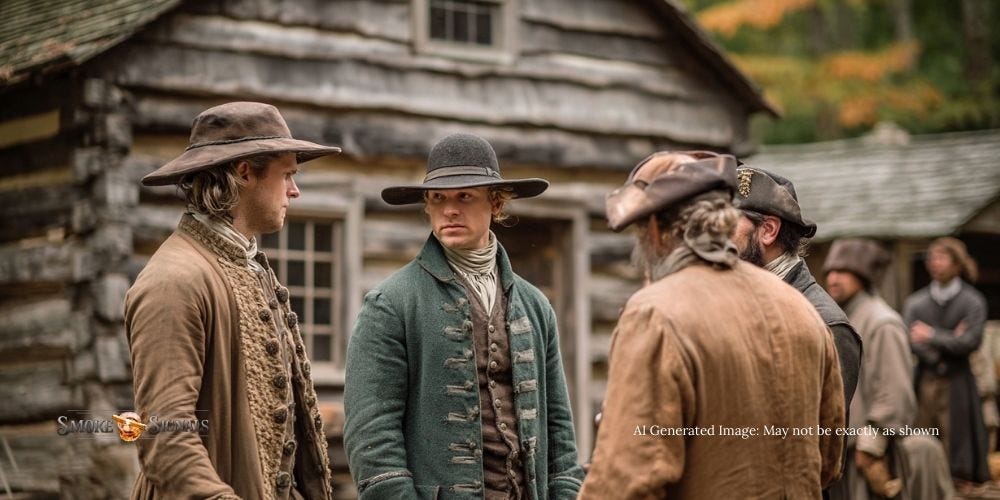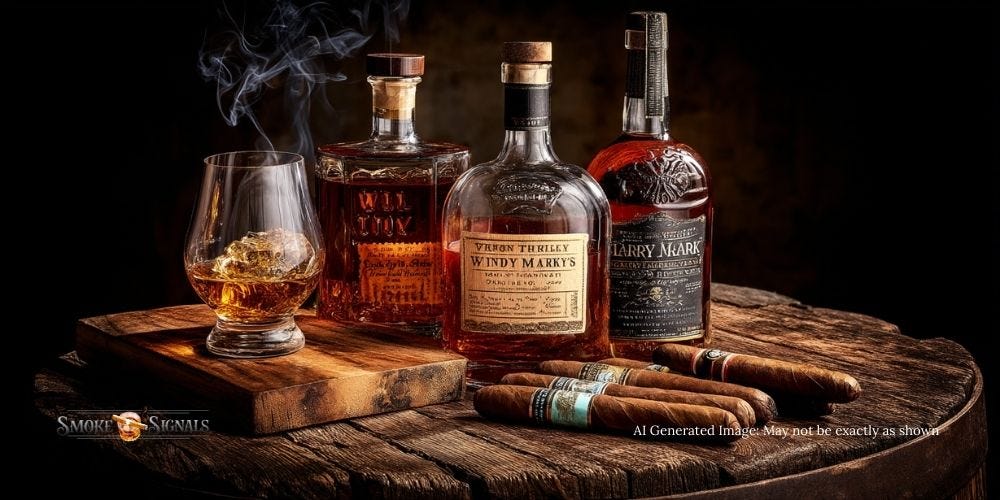The Whiskey Rebellion: When Farmers Fought for Their Bourbon
How a frontier tax revolt shaped America’s spirit.

Listen While You Read 🎧
Hit play and let the story of America’s fiery whiskey rebellion come alive in your ears while you enjoy this read.
Introduction
Picture yourself in the rugged hills of Western Pennsylvania in 1791. Life is hard, money is scarce, and whiskey isn’t just a drink — it’s your livelihood, your currency, even your survival. Then comes news of a new federal excise tax, dreamed up by Alexander Hamilton in far-off Philadelphia. For small farmers, this wasn’t just policy; it was a direct attack on their way of life.
What followed was no ordinary protest. It was a battle of independence, waged with muskets, liberty poles, and barrels of whiskey — and it would test the strength of a brand-new nation. For a quick overview, you can read the Britannica summary of the Whiskey Rebellion.
Key Takeaways ✨
🥃 Whiskey was more than a drink — on the frontier it was currency, barter, and a symbol of survival.
⚔️ The rebellion revealed deep divisions between small farmers and federal power in early America.
👑 George Washington’s dramatic response cemented federal authority but left a rebellious spirit tied forever to whiskey.
🔥 The legacy lives on in bourbon — today’s drinkers still raise a glass to that frontier defiance.
Whiskey as Frontier Currency

Before it was America’s signature spirit, whiskey was a survival tool. On the Appalachian frontier, cash was scarce and markets were far away. Farmers discovered that turning surplus grain into whiskey wasn’t just practical — it created something valuable, portable, and long-lasting. For many, barrels of whiskey became as good as coins in the pocket.
Life on the Edge of the Republic
In Western Pennsylvania, families struggled with rocky soil and long winters. A sack of corn was bulky and quick to spoil, but distilled into whiskey, it became shelf-stable and profitable. A jug of rye whiskey could pay a doctor, buy supplies, or settle debts. To these farmers, whiskey wasn’t luxury — it was daily life.
The Federal Whiskey Tax of 1791
That all changed when Alexander Hamilton, determined to raise revenue for the new federal government, introduced an excise tax on distilled spirits. Large distillers in the east could absorb the cost, but frontier farmers with a single still bore the brunt. To them, it wasn’t just taxation — it was betrayal. After all, hadn’t the Revolution been fought against unfair taxes?
For details on the law itself, the TTB’s account of the Whiskey Rebellion explains how the excise tax worked and why it hit small distillers the hardest.
Sparks of Rebellion

The excise tax didn’t just pinch wallets — it ignited tempers. For frontier farmers, this was the federal government’s first real intrusion into their lives, and they weren’t about to submit quietly. What began as grumbling over fairness soon erupted into open defiance.
Protests in Western Pennsylvania
Across the hills, tax collectors became marked men. Farmers jeered, mobs gathered, and in more than one case, excise officers were tarred and feathered before being run off the land. The most infamous clash came at Bower Hill, the home of tax inspector General John Neville, where angry farmers laid siege and violence spilled into bloodshed.
For a look at Hamilton’s side of the story, the Gilder Lehrman Institute has a spotlight on his writings during the rebellion, showing how seriously the government viewed these protests.
Symbolism and Resistance
The rebels saw themselves as heirs to the Revolution. They raised liberty poles, marched under flags, and shouted slogans echoing 1776. For them, the whiskey tax was more than a levy — it was proof that the new government had betrayed the very ideals it was founded on. Every protest, every musket fired, was a reminder that these farmers still considered themselves defenders of liberty.
Washington’s Response

By 1794, protests had grown too loud to ignore. Tarred tax collectors, burned homes, and armed mobs convinced the young federal government that this was more than frontier grumbling — it was a direct challenge to authority. For the first and only time in U.S. history, a sitting president prepared to lead troops into the field.
Calling Out the Militia
George Washington mustered nearly 13,000 troops, drawing men from Virginia, Maryland, New Jersey, and Pennsylvania. To put that in perspective, it was a force larger than most Continental Army campaigns during the Revolution. Washington himself rode west to review the troops, making it clear that defiance of federal law would not stand.
For the official tone of the moment, you can read Washington’s proclamation against the rebellion, which shows just how seriously he viewed the threat.
The Aftermath
When the militia finally arrived in Western Pennsylvania, the rebellion quickly fizzled. Leaders melted away, most farmers returned to their fields, and only a handful were arrested. Two were convicted of treason but later pardoned. Washington had proved the federal government’s authority — but at the cost of alienating many who felt betrayed by the very revolution they had fought to win.
Legacy for Whiskey Lovers
Though the muskets were silenced, the echoes of the Whiskey Rebellion carried far beyond Pennsylvania’s hills. The uprising didn’t just cement federal authority — it helped define whiskey as America’s spirit, both literally and symbolically.
Bourbon as America’s Spirit
On the frontier, distillers increasingly turned to corn, which thrived in Kentucky’s fertile soil. Over time, this corn whiskey would become bourbon, aged in charred oak barrels and celebrated as uniquely American. The rebellion underscored whiskey’s importance: it wasn’t just another commodity, it was woven into the nation’s fabric. When people raise a glass of bourbon today, they’re sipping from a tradition born in defiance.
Modern Reflections
Whiskey brands haven’t forgotten that rebellious spirit. From labels that celebrate frontier grit to small-batch distillers who proudly buck convention, the story of 1794 still pours through every bottle. For drinkers, the rebellion is more than history — it’s part of the attitude that makes bourbon bold, unyielding, and proudly American.
For a deeper dive into the broader historical context, the Mount Vernon Digital Encyclopedia entry on the Whiskey Rebellion ties the story directly to Washington’s presidency and the nation’s early identity.
The Perfect Pairing

The Whiskey Rebellion was about grit, defiance, and standing your ground. So when raising a glass to those frontier farmers, reach for bold whiskeys with a rebellious streak — and cigars that match their fire.
Whiskeys Worthy of Rebellion
Wild Turkey 101 — High proof, unapologetically spicy, a bourbon that embodies bold defiance.
Maker’s Mark Cask Strength — Rich, full-bodied, with that wheated bourbon smoothness turned up to eleven.
Rittenhouse Rye Bottled in Bond — A nod to Pennsylvania rye, carrying heritage flavors with a strong, peppery kick.
Cigars to Match the Spirit
Alec Bradley Black Market Estelí — Spicy, earthy, and rebellious in character — a natural fit with Wild Turkey.
Arturo Fuente Hemingway Short Story — A classic with complexity and charm, perfect with Maker’s Mark.
Oliva Serie V Melanio — Full-bodied with chocolate and spice that stand shoulder-to-shoulder with Rittenhouse rye.
Pair any of these combinations, and you’re not just tasting smoke and spirit — you’re tapping into the same rebellious energy that once shook the republic.
Conclusion — Raising a Glass to Rebellion
The Whiskey Rebellion may have ended without a battle, but its spirit never truly died. It was a clash between survival and authority, between farmers on the edge of the republic and a government still finding its footing. Out of that struggle, whiskey — and later bourbon — claimed its place as more than just a drink. It became a symbol of defiance, independence, and the stubborn will of everyday people.
So the next time you pour a glass of bourbon or light up a cigar, remember those farmers who fought for their livelihood with barrels and muskets. Their rebellion lives on in every sip — fiery, proud, and distinctly American.
Want more stories that connect cigars, whiskey, and history? Subscribe to Smoke Signals and never miss the next tale.


